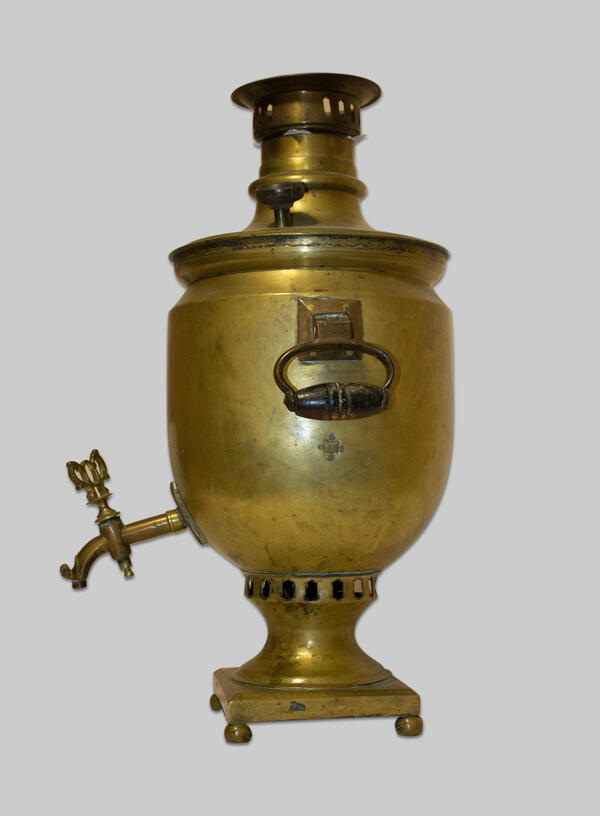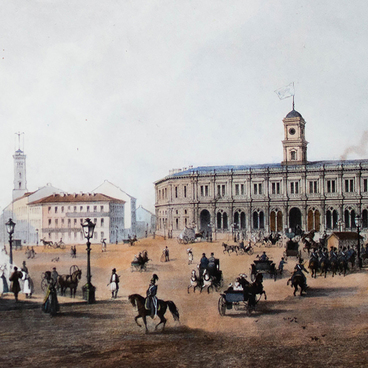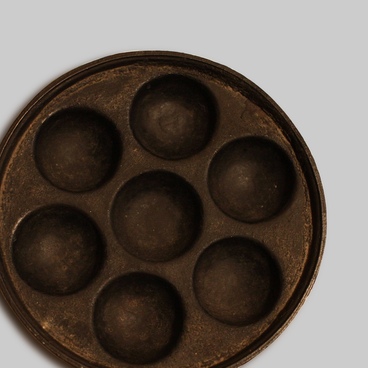Water heating appliances have existed in various cultures for ages. One of the most remarkable of them is the Roman authepsa, which was based on the same principle as the samovar.
The origins of the Russian samovAr remain an open question. The traditional version points to the factories of the Lisitsin brothers in Tula, where samovar manufacturing began in 1778. In addition to Tula, there are two more places in the Urals that claim to be the original home of the Russian samovar: the Demidovs' plants and the Irginsky Plant. There is also a very interesting document issued in 1740, which tells of a certain seizure at the Yekaterinburg customs. The list of seized goods included ‘a copper, tin-plated samovar, weighing 16 pounds, factory work’, produced by the Irginsky Plant, to be specific.
In the late 18th century, the samovar got its present-day look and a rather complex design: it had a pipe, steam vents, drip-bowl, tap, handles, top rings, lids, caps and plugs.
In Russia, samovars were ubiquitous. They were made not only in a standard design but also according to the customer’s wishes: they came in various sizes, they could be souvenirs, they could be decorated, shaped like urns, cylinders, snifters, barrels, spheres, stars, boots, trains, cannons and even fig signs. The craftsmen’s imagination knew no bounds. Samovars were very expensive, and only wealthy people could afford to buy them. In the middle of the 19th century, during the reign of Nicholas the First, an average samovar cost between five and seven rubles. In those days, one could buy a cow for this amount.
Throughout the 19th century, samovars were made of copper or a copper alloy, brass. Classic brass has a straw-yellow color similar to gold. When there was more than 80% copper in brass, the alloy acquired a characteristic reddish color. This alloy was called tombac, and the samovar was called a tombac, respectively.
Samovars came in dozens of shapes, or, as the people called it, ‘styles’. A simple cylindrical samovar was the most popular of those. A snifter-shaped samovar was next in popularity: it was narrow at the bottom. This is the shape of the samovar from the Museum’s collection.
The origins of the Russian samovAr remain an open question. The traditional version points to the factories of the Lisitsin brothers in Tula, where samovar manufacturing began in 1778. In addition to Tula, there are two more places in the Urals that claim to be the original home of the Russian samovar: the Demidovs' plants and the Irginsky Plant. There is also a very interesting document issued in 1740, which tells of a certain seizure at the Yekaterinburg customs. The list of seized goods included ‘a copper, tin-plated samovar, weighing 16 pounds, factory work’, produced by the Irginsky Plant, to be specific.
In the late 18th century, the samovar got its present-day look and a rather complex design: it had a pipe, steam vents, drip-bowl, tap, handles, top rings, lids, caps and plugs.
In Russia, samovars were ubiquitous. They were made not only in a standard design but also according to the customer’s wishes: they came in various sizes, they could be souvenirs, they could be decorated, shaped like urns, cylinders, snifters, barrels, spheres, stars, boots, trains, cannons and even fig signs. The craftsmen’s imagination knew no bounds. Samovars were very expensive, and only wealthy people could afford to buy them. In the middle of the 19th century, during the reign of Nicholas the First, an average samovar cost between five and seven rubles. In those days, one could buy a cow for this amount.
Throughout the 19th century, samovars were made of copper or a copper alloy, brass. Classic brass has a straw-yellow color similar to gold. When there was more than 80% copper in brass, the alloy acquired a characteristic reddish color. This alloy was called tombac, and the samovar was called a tombac, respectively.
Samovars came in dozens of shapes, or, as the people called it, ‘styles’. A simple cylindrical samovar was the most popular of those. A snifter-shaped samovar was next in popularity: it was narrow at the bottom. This is the shape of the samovar from the Museum’s collection.



